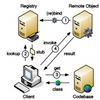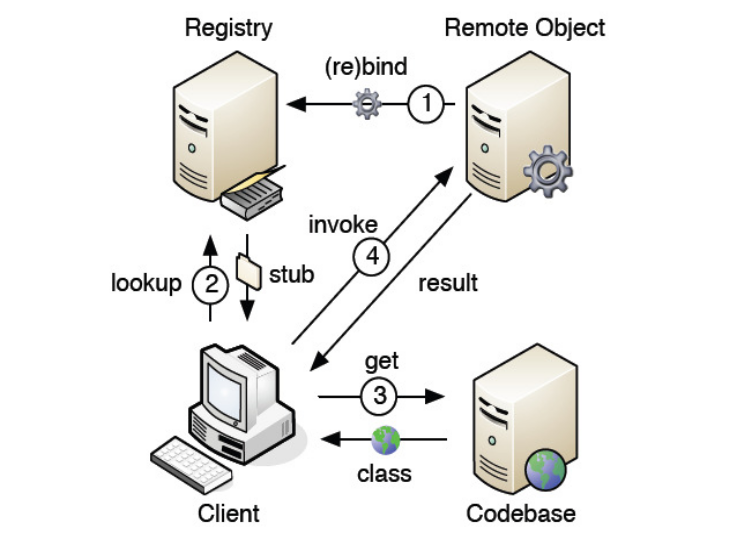
Abstract
Java Remote Method Invocation (RMI) is a built-in and easy-to-use framework for the distribution of remote Java objects. Its simplicity and seamless inter-virtual machine communication has made it a valuable tool for distributed services. It nevertheless exhibits certain constraints that practically limit RMI applications to the classical client/server distribution model, and make highly distributed and highly dynamic systems very difficult to build atop RMI.
We present an approach that makes Java RMI usable for P2P and similar distribution models. The solution basically consists of three ideas: (1) separate the location of the registry from the remote service object, (2) distribute the registry across a DHT infrastructure, and (3) transparently enhance the built-in communication between RMI servers and clients to allow traversal of NAT and firewall boundaries. Our approach is extremely lightweight, transparent, and requires practically zero configuration.
BibTeX (Download)
@article{Zink2012P2P-RMI,
title = {P2P-RMI: Transparent Distribution of Remote Java Objects},
author = {Thomas Zink and Oliver Haase and Jürgen Wäsch and Marcel Waldvogel},
url = {https://netfuture.ch/wp-content/uploads/2015/02/zink2012p2p-rmi.pdf},
year = {2012},
date = {2012-09-01},
urldate = {1000-01-01},
journal = {International Journal of Computer Networks & Communications (IJCNC)},
volume = {4},
number = {5},
pages = {17-34},
abstract = {Java Remote Method Invocation (RMI) is a built-in and easy-to-use framework for the distribution of remote Java objects. Its simplicity and seamless inter-virtual machine communication has made it a valuable tool for distributed services. It nevertheless exhibits certain constraints that practically limit RMI applications to the classical client/server distribution model, and make highly distributed and highly dynamic systems very difficult to build atop RMI.
We present an approach that makes Java RMI usable for P2P and similar distribution models. The solution basically consists of three ideas: (1) separate the location of the registry from the remote service object, (2) distribute the registry across a DHT infrastructure, and (3) transparently enhance the built-in communication between RMI servers and clients to allow traversal of NAT and firewall boundaries. Our approach is extremely lightweight, transparent, and requires practically zero configuration.},
keywords = {Java RMI, NAT traversal, Peer-to-Peer, Service Discovery},
pubstate = {published},
tppubtype = {article}
}



